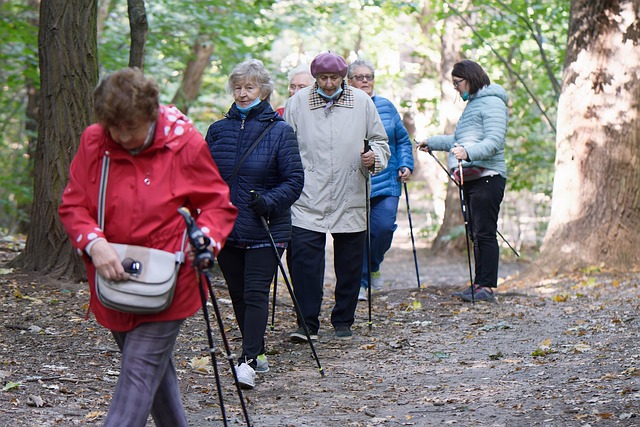Technology is revolutionizing care for aging family members, enhancing safety, independence, and quality of life. Smart home devices offer features like fall detection, remote monitoring, and automated routines, providing peace of mind and assistance to caregivers while empowering seniors to live independently in their homes. Wearable devices with advanced safety nets and user-friendly mobile apps facilitate connection, and remote health monitoring systems enable early intervention for chronic conditions or cognitive impairments. Additionally, communication tools like video calling, smart speakers, and messaging platforms combat isolation and support virtual social gatherings, enhancing the overall well-being of older adults.
As our loved ones age, ensuring their well-being and independence becomes a top priority. Technology offers innovative solutions for monitoring and supporting aging family members right from home. This article delves into the growing importance of technology-assisted care, exploring smart home devices that enhance comfort and safety. We’ll uncover digital tools to track health and location, while also highlighting how technology fosters communication and social engagement for our seniors.
Understanding the Need for Technology-Assisted Care
As our loved ones age, ensuring their safety and well-being becomes a paramount concern for many families. Traditional caregiving methods often face challenges in keeping up with the evolving needs of aging family members, especially when they start to live independently or have mobility issues. This is where technology steps in as an indispensable ally, offering innovative solutions to bridge this gap. By leveraging technological advancements, we can transform the way we support our elders, enabling them to age gracefully and securely within their own homes.
The need for technology-assisted care is driven by the unique challenges of modern aging. From remote health monitoring devices that track vital signs to smart home systems that detect falls or unusual behavior, these tools provide continuous support. They offer peace of mind for caregivers and empower seniors with greater independence. By integrating these technologies into daily routines, we can enhance their quality of life, maintain their dignity, and ensure they receive the necessary assistance when it’s needed most.
Exploring Smart Home Devices and Their Benefits
Smart home devices are transforming the way we care for our loved ones, especially as we consider support for aging family members. These innovative gadgets offer a range of benefits tailored to improving safety, independence, and quality of life for seniors. For instance, smart alarms and sensors can detect falls or unusual activity patterns, enabling prompt assistance when needed.
Smart home technology also facilitates remote monitoring by allowing caregivers to check in on their loved ones from anywhere, ensuring peace of mind. Additionally, automated routines can assist with daily tasks like lighting adjustments, medication reminders, and even scheduling social interactions, fostering a sense of connection and well-being among aging individuals.
Digital Tools for Monitoring Health and Safety
Digital tools have revolutionized the way we can monitor and support our aging loved ones, providing a safety net that was previously unimaginable. Wearable devices, for instance, are becoming increasingly sophisticated, offering not just step-count and heart rate monitoring but also fall detection and automatic emergency alerts. These devices can provide peace of mind by ensuring prompt medical attention in case of an accident, especially when paired with easy-to-use mobile apps that allow family members to stay connected and informed.
Additionally, remote health monitoring systems enable caregivers to track vital signs, medication adherence, and even sleep patterns from a distance. This technology is particularly beneficial for those with chronic conditions or cognitive impairments, as it facilitates early intervention and continuous support. By leveraging these digital tools, we can enhance the quality of care for aging family members while empowering them to live more independently.
Enhancing Communication and Social Engagement
Technology plays a pivotal role in enhancing communication and social engagement, particularly for older adults who may face challenges interacting with others due to age-related changes or health issues. Modern tools like video calling apps, smart speakers with voice assistants, and messaging platforms allow seniors to stay connected with family and friends, fostering a sense of belonging and reducing feelings of isolation. These technologies facilitate easy conversations, enable the sharing of life updates, and create opportunities for virtual social gatherings, ensuring that aging loved ones remain an integral part of their social networks.
For those providing support to aging family members, these technological resources are invaluable. They can easily stay in touch with seniors, monitor their well-being through regular video check-ins, and even coordinate care remotely. This not only provides convenience but also empowers caregivers by giving them a more comprehensive view of their loved ones’ daily lives, allowing for better-informed decisions regarding their needs.
As we navigate an increasingly digital world, leveraging technology to provide support for aging family members offers a promising path toward enhancing their quality of life. By integrating smart home devices, digital health monitoring tools, and communication platforms, we can create safer, more connected environments that cater to the unique needs of our loved ones as they age. These innovations not only facilitate daily tasks but also foster social engagement, ensuring they stay connected to the world around them. Embracing technology in caregiving is a step towards building a future where aging is supported, comfortable, and filled with meaningful interactions.
